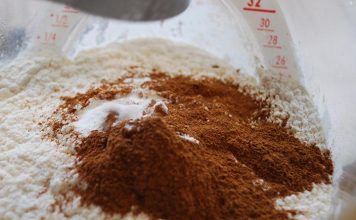 |
|
| Issue #137 • September/October, 2012 |
I discussed in Part 1 the many reasons why preppers need to think more long-term about providing reliable electric power. I also mentioned that while it’s nice to have a backup generator, you should remember any generator can fail, not start, or run out of fuel during an extended power outage so it’s important to ask … what then?

Whole-house generators provide great short-term backup power, but most have a limited fuel supply.
The easiest way to find this out is to take a weekend and just shut off the main utility breaker supplying power to your home. Before the weekend is over, you will quickly realize which systems and devices you just can’t live without, and for most homeowners these can be divided into the following categories:
Communications: While wide-screen televisions and whole-house sound systems are great entertainment, you can live without them. However, for keeping up with the news and relatives you will at least need a way to keep your cell phone, an AM radio, and perhaps a laptop computer fully charged.
Water: Although you can get by for a few weeks taking a bird-bath in cold water, you and your pets cannot safely go more than a day without fresh drinking water. And without water, you can’t flush a toilet or prepare most meals.
Lighting: You can get by without a ceiling light in every room of your home, but you will at least need some task lighting to temporarily illuminate your family’s eating area, at least one bathroom, any stairs, and the main room where you all will congregate each evening.
Food preparation: Anyone with a wood stove, BBQ grill, or campfire can always cook a meal, but there are still many ways electricity makes food preparation much less labor intensive.
Refrigeration: I am sure all preppers have a well-stocked pantry, but all the milk, butter, and eggs in the refrigerator, and all that meat, even in a well-insulated freezer, will still start to spoil in less than two days without electricity.

Portable solar-powered LED task light
Batteries and chargers
Let’s start with the least costly step first. By all means have a backup generator and lots of stabilized fuel, but we are addressing what to do after the generator quits and it could still be days or weeks before the power is back on.
You need to purchase two or three quality LED flashlights and several packs of spare batteries. Although you can find small LED flashlights for less than $4 at any gas station or thrift store, these are usually cheaply made and are not suitable for a long-term emergency backup plan. The low-cost internal parts will quickly corrode and fail just when you need them. Better-quality LED flashlights will cost more than $20 each and are easy to identify as they will have a single 1 or 2 watt LED chip, and not multiple smaller LED lamps. The single-chip LEDs are a newer design and provide much more lighting output and longer life. This is also the time to search for a really good quality battery-powered AM radio. Be sure to select LED flashlights and a radio that use the same size batteries, and avoid devices requiring the tiny “AAAA” size batteries as these provide very-limited run time.
For emergency lighting for an entire room, there are now lantern-size LED lights available from RV and camping supply stores. You should have at least one LED lantern in addition to several flashlights. Again, the more expensive LED lanterns will have a longer life and utilize the larger “C” or “D” size batteries which will provide many more nights of room-filling light. I also recommend selecting a LED lantern model that includes a solar charger, or buy rechargeable batteries and use a solar-powered battery charger.

A fold-up 25-watt solar module recharges a laptop computer and cell phone
I own a high-quality battery charger that can recharge different sizes of batteries at the same time. The unit I purchased has a 120-volt AC power adapter that supplies 12-volt DC power to the charger. I purchased a separate 25-watt solar module and added a plug that fits the same connector on the battery charger as the AC power adapter. This modified system has far more battery-charging capacity than the small hand-held solar chargers, and I can power the same unit from the solar module, the lighter outlet in my car, or from grid power. Being able to quickly re-charge multiple sizes of batteries at the same time with one unit is also more cost effective during a long-term utility outage since rechargeable batteries can be used over and over. For electronic devices with non-removable batteries like cell phones, iPads, iPods, and laptop computers, a portable fold-up solar module in the 25-watt size range is simple and very reliable.
There is no way around it, pumping water and powering a conventional refrigerator or freezer using solar power is expensive. These devices consume lots of electrical power each day, and that includes using extra stored battery power at night and during days when the sun is blocked by clouds. If you can afford a whole-house battery-based solar system then by all means this is the best of both worlds. However, I am going to assume most of you are looking for a less expensive way to power at least a water pump and freezer without spending the price of a new car.
Although a DC to AC inverter in the 2 to 3 kW size range should be able to handle the high startup power requirements of most deep-well AC pumps, these more rugged inverters are expensive and will require several hundred pounds of deep-cycle batteries and 1 to 2 kW of solar modules to keep them charged. Of course any solar system large enough to power a well pump will also be able to keep your refrigerator operating as well as most interior lights and small appliances, but there are other ways to do this that will not drain your bank account.

Multiple-size battery charger modified to use grid, car, or solar power
All but the smallest well pumps are designed to operate on 240-volt AC power. Since most residential size inverters only produce 120-volts AC, you would need to either install two 120-volt AC inverters designed to work together to produce 240-volts, or add a heavy120 to 240-volt step-up transformer when using a single 120-volt AC inverter.
There are many sizes of 12- and 24-volt DC well pumps that do not require an expensive AC inverter to operate. Although these smaller pumps will not provide the high flow rates needed to wash your car, they will provide more than enough flow for your kitchen and bathroom needs, even with wells over 200 feet deep.
I have a high-flow 240-volt AC pump positioned near the bottom of my 300-foot-deep well, and I installed a smaller low-flow DC pump higher up in the well. I have tied the outlet pipes from both pumps together using two check valves. These are piped into the common pipe supplying the house. This allows either pump to supply water without one pumping back into the other. Normally the higher pressure 240-volt AC pump supplies all of the water we need, so the second pressure switch controlling the smaller DC pump never allows it to run.
However, if the grid and generator both fail, the AC pump will not operate so when the water pressure drops to the lower setpoint of the second pressure switch, the DC pump will take over. Since the smaller DC pump has a much lower flow rate than our larger AC pump, our system also includes an oversized expansion tank to provide extra reserve capacity. This means it will take several flushes of a toilet or a long shower before the water pressure drops enough to start the smaller DC pump. The large expansion tank will supply high flow rates for brief periods which allows the lower flow rate DC pump time to refill the pressure tank.

Outback 3.6 kW inverter, eight deep-cycle batteries, and a roof-mounted solar array powers a SunDanzer freezer, microwave oven, a deep-well pump,
and lights for this off-grid cabin.
If this plumbing solution is too complex for your needs, you could install the smaller DC pump in your well or cistern for backup water pumping and connect it directly to a long garden hose instead of the house plumbing, then use the ol’ bucket method of water distribution. If all of your power sources fail, these smaller 12-volt DC pumps can be temporarily powered by your truck or car battery.
Portable battery backup systems on carts will keep some lights and small appliances operating for one or two days, but are only able to keep a conventional kitchen-size refrigerator or freezer operating a few hours and are not intended to provide long-term backup power for major appliances. A more cost-effective method is to buy a DC freezer that is always operating on battery power, even when the grid is working. Two deep-cycle 6-volt golf cart batteries will keep a mid-size Sun Frost or SunDanzer DC freezer cold for several days just using battery power. These batteries are connected to an AC battery charger which will keep the batteries fully charged and the freezer working during normal grid-power operation and the fully charged batteries will be ready for the next utility outage. By adding a 100- to 200-watt solar module, this DC freezer with both a solar battery charger and grid connected charger is much less expensive and more reliable than trying to power a conventional 120-volt AC refrigerator using a 120-volt AC solar power system.
This will give you a freezer that is always powered by solar charged batteries, with the AC battery charger serving as backup. During an extended utility outage when your regular AC refrigerator has stopped working, it can still function as a well-insulated ice chest using ice supplied from the solar-powered DC freezer which will still be working normally. This guarantees you will have ice and frozen meats stored indefinitely in the DC freezer, while still keeping milk, eggs, and butter cold in a non-operating AC refrigerator or ice chest. Although there are several manufacturers of DC refrigerators and DC freezers, for extended power outages the DC freezer will be more functional than a DC refrigerator even if it will require more solar power to maintain the colder temperature.
By increasing the charge capacity or quantity of golf cart batteries and solar modules, the same solar system could also power a DC well pump and a small portable 12-volt DC to 120-volt AC inverter powered by the same solar-charged batteries. I do not recommend connecting an inverter larger than 600 watts to these small off-grid solar systems since any large AC loads will totally deplete the small battery bank in just a few hours if you tried to power a microwave oven, toaster, or conventional refrigerator. However, a 600-watt inverter should be able to power small 120-volt AC kitchen appliances, a laptop computer, or small flat-screen television and satellite receiver.

Build your own power supply
If you want to build this combination solar and grid backup power supply for a 12-volt DC freezer, it’s important to use the correct components. Referring to the wiring diagram, you will need a solar module, solar charge controller, batteries, automotive battery charger, fuse, and DC freezer. You can also add a small DC well pump if needed.
Depending on where you live and the cubic foot size of the freezer, the solar module needs to have a minimum of 100 watts capacity. In areas with less sun-hours or for larger freezers, you may need two or more modules in this size range. Be aware that solar modules larger than 100 watts typically are designed for 24-volt multi-string arrangements that use a totally different wiring layout, which is why I suggest staying with modules in the 75- to 100-watt range as their nominal 17-volt output is perfect for charging 12-volt batteries. There are many low-cost solar charge controllers in this smaller size range, and some include digital displays which are helpful to monitor the battery and solar charging operation. A 100-watt solar module will require a solar charge controller with a 10-amp capacity when used on a 12-volt battery system. Use this same ratio to determine the size of the charge controller on larger solar arrays.
I recommend using two six-volt golf cart batteries instead of one 12-volt RV/marine battery, as golf cart batteries are designed for a more severe daily deep discharge and recharge cycling. These are also the lowest-cost deep-cycle battery you can find in the high amp-hour capacity this system requires. Deep-cycle batteries are also available in a sealed gel version for locating in occupied areas and these do not require any maintenance, but they will have a substantially higher cost.

SolarJack 12-volt DC deep-well pumps provide great backup pumping with minimum power requirements.
Selecting a 120-volt AC automotive-type battery charger is usually where most people make the biggest mistake. Since you will be leaving this charger plugged in and operating full-time, it’s important to purchase a charger that has multiple stages of charging and an automatic shut-off or “float” mode. Although a 10-amp output charger is usually satisfactory to keep the batteries fully charged during extended periods of minimum sun-hours, without the automatic shut-off feature it will continue to charge the batteries at a full 10-amp output until it boils all the water out and permanently destroys the batteries. It is also possible to use a “trickle” battery maintainer instead of a full-function battery charger, but it needs to have enough amp capacity to put into the battery each day the same amount of amp-hours the freezer consumes. You will need to cut off the alligator clips that come with most battery chargers and replace with crimp-on ring terminals that will fit the large battery posts.
To keep wiring losses to a minimum, you will need to locate the batteries and both chargers close to the freezer and do not undersize the interconnect wire. Having a charger with a battery voltage display located near the freezer also makes it easier to monitor the charging process and avoid a freezer full of spoiled food if something failed and you have not recently opened the freezer to check.
Conclusion
The price of solar modules has dropped significantly in the past few years, but whole-home solar power systems still cost thousands of dollars. If you do have a generator, keep it well maintained with plenty of rotated cans of fresh fuel. However, start thinking in terms of what loads you will still need to power once the generator quits and your area is still weeks away from getting grid-power re-established. A solar powered DC freezer and backup DC well pump can operate indefinitely without the utility grid or a generator, and should be part of all preppers’ emergency backup planning.
And if the grid fails and this solar backup system for your generator backup system both fail, you better keep a few candles and matches around just in case!
Equipment Supplies:
DC Freezers:
www.sundanzer.com, 915-821-0042
www.sunfrost.com, 707-822-9095
DC Well Pumps:
www.sunpumps.com, 800-370-8115
www.solarpumps.com, 866-519-7892
www.dankoffsolarpumps.com
[weaver_widget_area id=’articles_about_yago’ class=’text3′]














